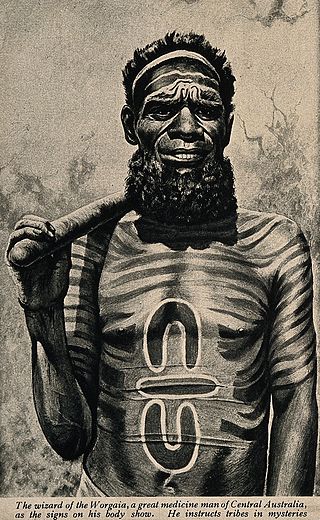The Martu (Mardu) are a grouping of several Aboriginal Australian peoples in the Western Desert cultural bloc.
The Yawuru, also spelt Jawuru, are an Aboriginal Australian people of the Kimberley region of Western Australia.
The Nyamal are an Indigenous Australian people of the Pilbara area of north-western Western Australia.
The Wenamba are an Aboriginal Australian people of the central eastern edge of Western Australia in the Goldfields Region.
The Nangatara are an Aboriginal Australian people of Western Australia.
The Niabali, otherwise written Nyiyaparli, are an indigenous Australia tribe of the Pilbara region of Western Australia.
The Putijarra are an Aboriginal Australian people of the Pilbara region of Western Australia.
The Kartudjara are an Aboriginal Australian people of the Pilbara region of Western Australia.
The Gooniyandi, also known as the Konejandi, are an Aboriginal Australian people in the Kimberley region of Western Australia.
The Waljen are an indigenous people of Western Australia, in the Goldfields-Esperance area.
The Ngurlu, also known as the Ngulutjara or Ngurlutjarra, are an Aboriginal Australian people of Western Australia.

The Wakaya are an Aboriginal Australian people of the Northern Territory.
The Ngolibardu, otherwise written Ngulipartu, were an Aboriginal Australian people of Western Australia.
The Widi were an Aboriginal Australian people of the Mid West region of Western Australia.
The Ngardi, also spelled Ngarti, are an Aboriginal Australian people of the Northern Territory and Western Australia.
The Ngaatjatjarra are an Indigenous Australian people of Western Australia, with communities located in the north eastern part of the Goldfields-Esperance region.
The Mandjindja, Mantjintjarra or Manytjilytjarra are an Aboriginal Australian people of Western Australia belonging to the Western Desert cultural bloc.
The Wardal were an Aboriginal Australian people of the Mid West and Goldfields-Esperance regions of Western Australia.
The Pini or Nana, or more specifically the Birniridjara, also spelt Piniridjara and Biniridjara, are an Aboriginal Australian people of Western Australia.
The Kalaako (Kalarko) were an Aboriginal Australian people of the Goldfields-Esperance region of Western Australia.